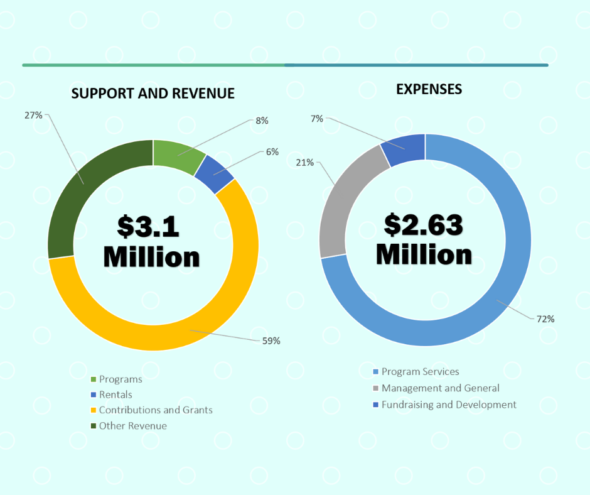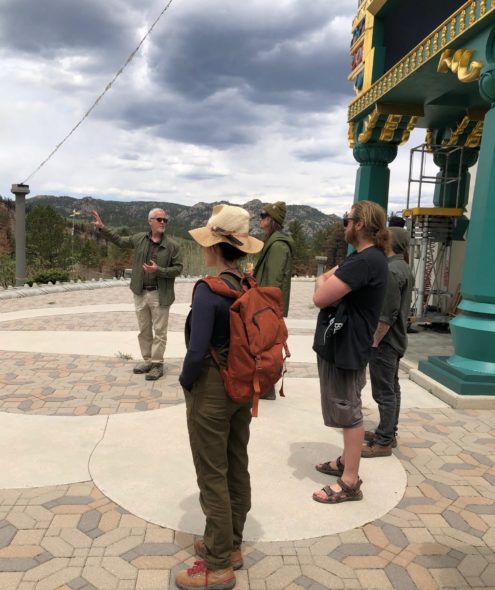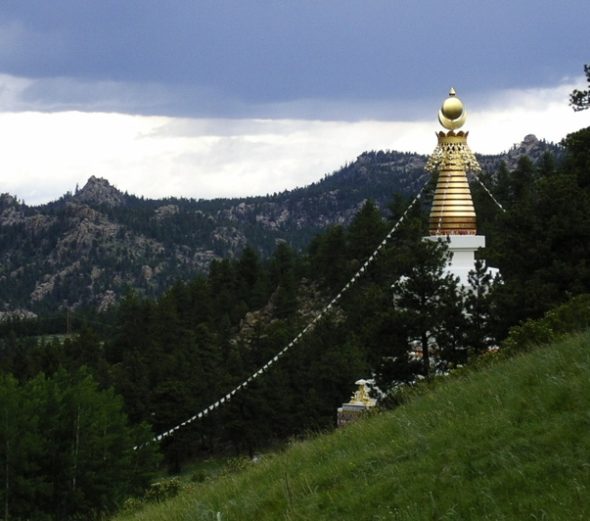2020 Financial and Infrastructure Report
Financial Overview
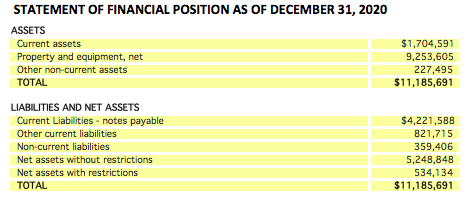 The revenue from programs and rentals decreased by approximately $2.2 million compared to 2019 due to the pandemic and the closure from the devastating Cameron Peak Fire. We launched online programs and a residency retreat program to augment revenues, bringing in 21% and 9% respectively of this year’s total program revenue.
The revenue from programs and rentals decreased by approximately $2.2 million compared to 2019 due to the pandemic and the closure from the devastating Cameron Peak Fire. We launched online programs and a residency retreat program to augment revenues, bringing in 21% and 9% respectively of this year’s total program revenue.
A full 84% of the other revenue is income recognized from the insurance claim proceeds. SMC received $289,000 via the Paycheck Protection Program Loan, which was critical to retaining staff during this unprecedented time. These supplemental funds continue in 2021, and SMC has received another $289,000 through the same program in February 2021. Employee Retention Credits will also support some of the payroll costs throughout the year while the operations capacity is suppressed and limited due to safety concerns and restrictions.
The total expenses in 2020 is 62% of 2019. Along with the reduced program revenue, most of the expenses were significantly reduced except for those not affected by the number of programs on the land, such as insurance, interest, certain amounts of utilities, and depreciation.
SMC’s Incredible Donor Community
In 2020, Shambhala Mountain Center donors raised a total of $1,100,744. SMC’s survival is the result of donors at every level supporting us through the cascading challenges of 2020.
Of the 5,551 gifts that were made to SMC in 2020, 97% of them were under $1,000, and 79% were less than $100. Every gift and every level of giving was critical to our survival, and we are profoundly grateful for your generosity.
In 2020, the Pema Chödrön Foundation and a key group of donors gave a total of $380,594 towards building a Staff Village to replace the staff housing lost in the fire. The Pema Chödrön Foundation also provided $100,000 for a new platform for the Main Shrine Tent.
Holding Together, Supporting Each Other
In addition, extremely generous gifts were received from the Shambhala Trust who provided food for the staff and housing repairs needed before the staff could return to the land, and the Boulder Shambhala Community Trust who provided support for staff who lost their possessions in the fire.
It was clear that we faced the challenges of 2020 together. This community solidarity was inspiring and served to underline just how much SMC means to so many people.
At right: Michael Gayner with SMC staff at The Great Stupa of Dharmakaya in May 2021.
Give for the Future
As SMC celebrates 50 years in 2021, our focus is on planning for the future. Please consider including SMC in your estate plans so that together we can continue to steward our precious land.
Learn More Here
Built and Natural Environments | Master Planning
SMC completed an 11-month ‘special review’ of our Land-Use Master Plan with Larimer County to prepare for future development. We are now well-positioned for any new development over the coming years. Phase I of our planning includes the creation of a staff housing village, and increased four-season practice and programming spaces.
SMC completed several projects with Colorado State University in 2020. The projects had to do with explorations and engineering associated with future development, a full analysis of our energy usage, and the beginnings ofan in-depth plan to bring SMC to carbon neutrality and net-positive energy consumption for all future growth.
We signed a contract for Phase II of our conservation forestry project. That process included working with a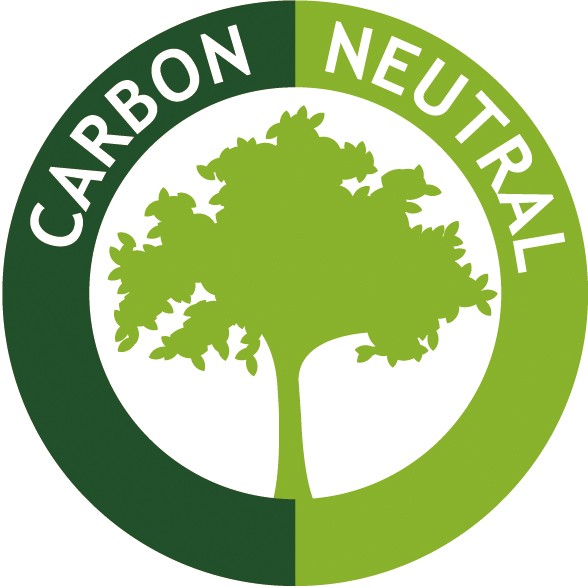 wide array of partners to plan the project, and work to secure grant funding (nearly $400,000) to complete the work. Our partners include the Fort Collins Conservation District, National Resource Conservation Service, US Department of Agriculture, National Forest Service, Colorado State Forest Service, Colorado State University, Front Range Community College, The Coalition for the Protection of the Poudre Valley Shed, and others. The forestry work will be completed in June 2021.
wide array of partners to plan the project, and work to secure grant funding (nearly $400,000) to complete the work. Our partners include the Fort Collins Conservation District, National Resource Conservation Service, US Department of Agriculture, National Forest Service, Colorado State Forest Service, Colorado State University, Front Range Community College, The Coalition for the Protection of the Poudre Valley Shed, and others. The forestry work will be completed in June 2021.
In the Fall of 2020, we began the process of eco-recovery for SMC following the Cameron Peak Fire impact on the property. This included arranging for a wide range of partners to support our efforts to stabilize the land, assess fire damage in our forested areas, protection of the water sources on the land, and planning to create and support a return to full health for our sacred land.
In addition to our land-recovery, we completed extensive repairs on our infrastructure to recover from fire impact. Work included work to return electric service to SMC, necessary repairs to our water treatment plant, and various repairs in buildings to bring them back to full operations capacity.


